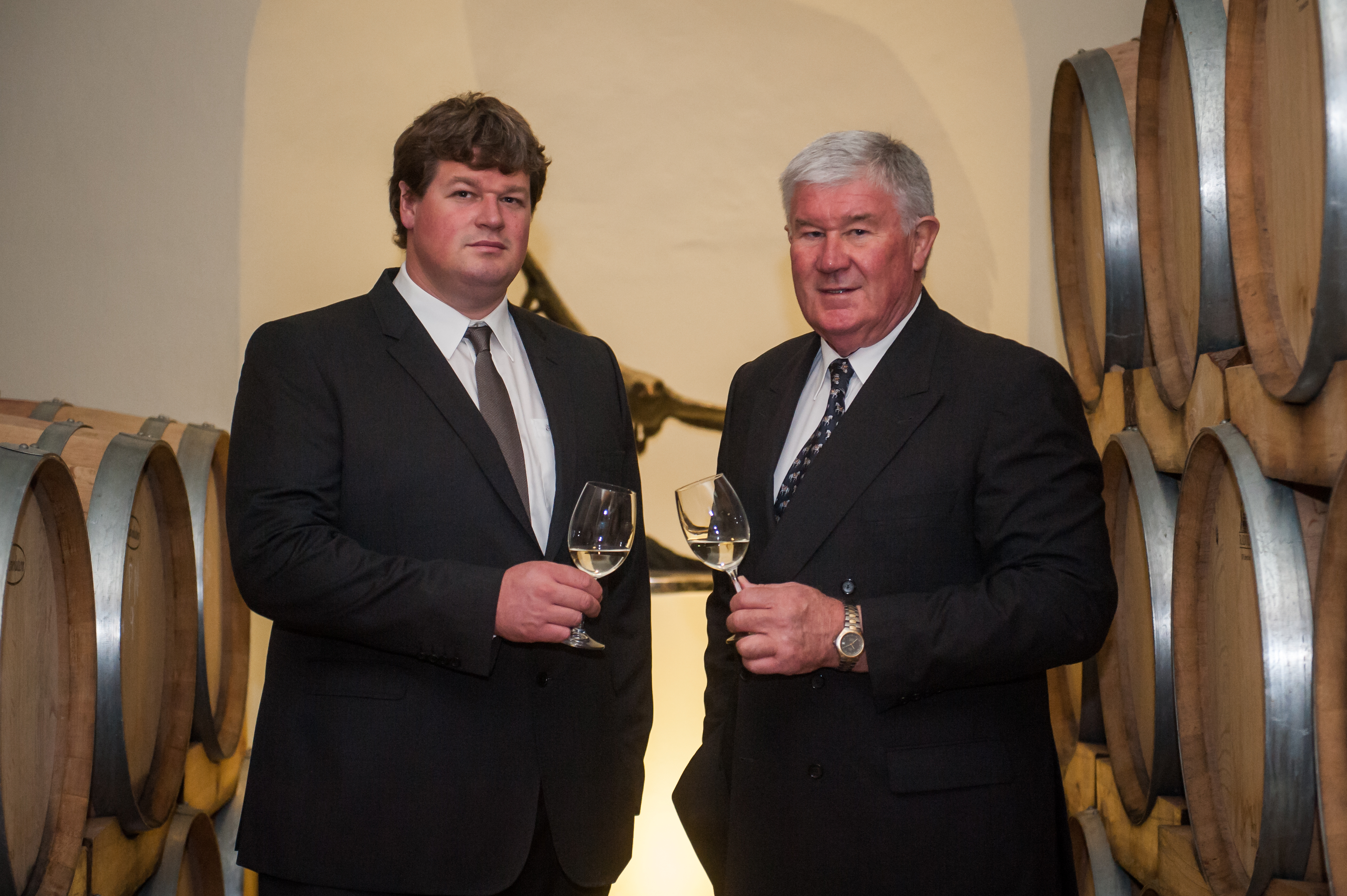THE GERMAN INFLUENCE
South African wine is gaining traction internationally – and much of it is based on an appreciation for wines made from old vines. But heritage is just as much about people as it is about rootstock, grape variety or clone.
The French Huguenot contribution to the country’s wine tradition has been well documented, but what of the German influence? In the 60s and 70s, that influence was reflected in the vines planted: Riesling (both the genuine Weisser and the so-called ‘Cape’ version, actually Cruchen Blanc), Gewürztraminer, Sylvaner, Bukettraube and even Kerner.
Some of the country’s greatest wine pioneers can credit much of their success to German training. Nederburg is without doubt one of South Africa’s most recognisable commercial brands and much of its success can be attributed to the role played by Günter Brözel who ran the winery from the late 50s until retirement in 1989 after 33 years at the helm.
Brözel decided to defy the authorities in typical bloody-minded fashion, simply bull-dozing ahead, firm in his conviction that South Africa was capable of making great sweet wines in the fashion of Sauternes, Tokay and Germany’s trockenbeerenauslese. That he won international acclaim for them is well known, eventually being honoured as the International Wine & Spirits Competition’s Winemaker of the Year in 1985. He also brought about a change in the law which was amended to recognise this new category of wine.
It’s almost inconceivable to think of Chardonnay not being part of South Africa’s vinous makeup. Yet 40 years ago, it wasn’t. There’s no argument that Danie de Wet played a hugely influential role in the transformation of the industry during his time as head of the KWV between 2004 and 2009, but it was his pivotal role in establishing Chardonnay plantings from smuggled vines which possibly had a greater impact. His formal wine education at Geisenheim in the late 60s and early 70s sparked his interest in the white Burgundian grape.
Fitting then that De Wetshof hosts the biennial Chardonnay celebration. Equally fitting that De Wet was awarded the Grand Prix d’Honneur for Chardonnay in 1985 at Vinexpo in Bordeaux, as well as being awarded the Diners Club Winemaker of the Year in 1993 for the Dewetshof Finesse Chardonnay. His son and current winemaker Peter followed in his footsteps, also graduating from Geisenheim a few years ago.

Danie de Wet and son Peter de Wet of DeWetshof
In the 80s a visiting Master of Wine group set a difficult challenge: to elevate the quality of South African Chenin Blanc. WINE magazine threw down the gauntlet and ran the annual Chenin Blanc Challenge – which was won three times in 16 years by Weinsburg graduate Jean Daneel, with Morgenhof and his eponymous Jean Daneel label. His son, Jean-Pierre, also trained at Germany’s Weinsberg.
The Von Arnims of Haute Cabriere also boast a father and son tradition of wine study and making – both having attended Geisenheim. Through sheer force of personality and focus on bottle fermented sparkling wine, dynamist Achim von Arnim did a tremendous amount to put SA bubbly on the map. Haute Cabriere’s still version of the classic Chardonnay/Pinot Noir blend is something of a phenomenon and is much imitated.
.jpg)
Takuan Von Arnim of Haute Cabriere
The adoption of cold fermentation had a revolutionary effect on white wines when pioneered in the 50s by NC Krone of Twee Jongegezellen in Tulbagh. It was also one of the reasons he insisted his son, Nicky Krone, also study winemaking in Germany. Like De Wet, he attended Geisenheim and later went on to pioneer night harvesting in order to ensure grapes reached the winery as cool as possible.
In the early 80s, at the time when Nico Myburgh and winemaker Giorgio dalla Cia were creating the second ever Bordeaux-style red blend in South Africa – Meerlust Rubicon – son and heir Hannes Myburgh was also hitting the books at Geisenheim.
From a standing start in the 80s, Klein Constantia rapidly established itself as one of the country’s foremost wine producers – and its reputation was based on its historical association with the Cloete family of Constantia and the wines produced by its Weinsberg-trained cellar jockey, the late Ross Gower. It was also Gower who was tasked with making and bottling the Muscat natural sweet, Vin de Constance in tribute to the fabled historic sweet wines of the area.
Other German-trained winemakers include Nico van der Merwe of Saxenberg and his own label (Geisenheim), Braam van Velden of Overgaauw (Geisenheim), Ernst Gouws (Weinsberg) and more recently, Diners Club Winemaker of the Year in 2006 for Chamonix Chardonnay, Gottfried Mocke who is now with Boekenhoutskloof – another Weinsberg old boy.
There’s also a significant German influence which has left a deep imprint – that of Spatz Sperling of Delheim. With Hans Hoheisen he established the Stellenbosch farm which has become a ‘must stop’ on the Stellenbosch Wine Route – something else he helped establish with Frans Malan of Simonsig and Neil Joubert of Spier.
These are names which are well known in the South African industry, having all contributed in some way to raising the bar and improving quality. A heritage to be proud of. Prost!
-Fiona McDonald